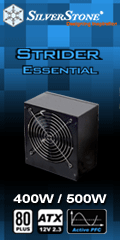
status: user
broj poruka: 1046 |
Your cooling solution can have a significant role in the longevity and the potential of your systems overclock. You can overclock your CPU on its stock heatsink and fan (HSF or HS/F), however it is highly recommended that you get active air cooling anytime you increase the voltage over stock settings. Once you become more experienced with your system and overclocking in general, you may want to try out more extreme methods of cooling. Such as water cooling, TEC, peltier, and phase-change. These extreme methods all have high risk, high cost, and high maintain involved. However, they also have high levels of performance.
Since we are only dealing with Intel overclocking, I will not get into video card cooling or overclocking. However, there are other components that you may wish to cool with aftermarket solutions in addition to your CPU. Such components include your systems northbridge (NB), southbridge (SB), voltage regulator (VRM), Pulse-width modulator (PWM), and your memory modules (DIMMS). The more you invest in cooling the longer you system will last and the higher you will be able to overclock.
As with all components, cooling follows the law of diminishing returns. What that means is that the more money, time, the benefiting results become smaller and smaller.
For Example:
Adding a HS/F to your system may increase your overclock by 50%. Spending an addition 0 for a watercooling setup may only offer 10% improvement in overclock over your HS/F, even though you spend 5 times as much!
Therefore, when someone on a budget is considering their system components, they should consider the Law of Diminishing Returns. Cooling can be a very expensive part of your system. If you are on a budget or are not interested in peaking your system performance air cooling is the best thing for you. Watercooling may give you a little more performance, but only your benchmarks will notice the difference. Watercooling should be used more as a hobby than a practical cooling solution.
The final component that I am going to discuss which plays an indirect role in your systems overclock is your motherboard power supplying components (VRM, PWM, ect) the Voltage Regulator and the Pulse-width Modulator regulate the power than goes to your CPU and memory. These components see what is called a voltage droop (Vdroop) when you go under system load. What happens is the system supplies less power at loads then what you set. That can be problematic if your system voltage varies to much. The only way this can be fixed is through hard voltage mods which require knowledge of soldiering and circuit boards. |



